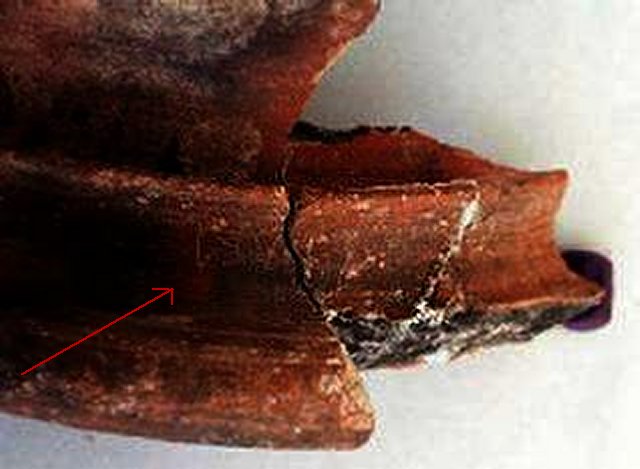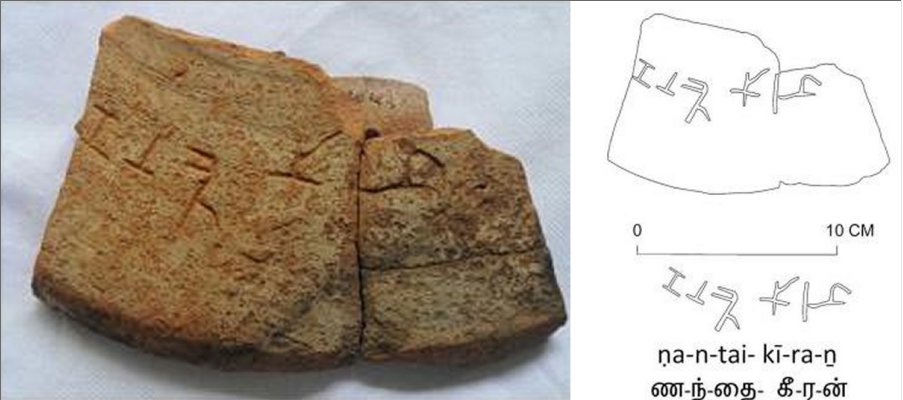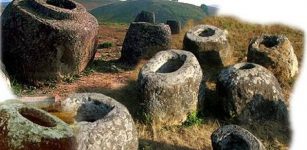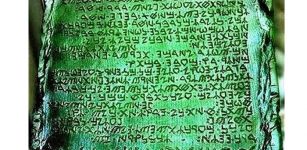Tamil Brahmi Script Discovered On Ancient Jars In Egypt And Oman
MessageToEagle.com – These findings are said to establish what was long suspected – the central role that India played in the maritime trade 2000 years ago.
A few years ago, a broken storage jar with inscriptions in Tamil Brahmi script [written in a combination of Tamil and the Brahmi script] has been excavated at Quseir-al-Qadim, an ancient port with a Roman settlement on the Red Sea coast of Egypt.
This Tamil Brahmi script has been dated to first century B.C. and is considered as an “exciting discovery” because similar inscriptions have also been found in other places.
The same inscription is incised twice on the opposite sides of the jar. The inscription reads paanai oRi, that is, pot (suspended) in a rope net.
An archaeological team at the University of Southampton, UK comprising of Prof. D. Peacock and Dr. L. Blue, who recently re-opened excavations at Quseir-al-Qadim in Egypt, discovered a fragmentary pottery vessel with inscriptions.
Dr. Roberta Tomber, a pottery specialist at the British Museum, London, identified the fragmentary vessel as a storage jar made in India.
Iravatham Mahadevan, a specialist in Tamil epigraphy, has confirmed that the inscription on the jar is in Tamil written in the Tamil Brahmi script of about first century B.C.

In deciphering the inscription, he has had the benefit of expert advice from Prof. Y. Subbarayalu of the French Institute of Pondicherry, Prof. K. Rajan of Central University, Puducherry and Prof. V. Selvakumar, Tamil University, Thanjavur.
See also:
Mysterious Gigantic Jars Of Unknown Origin Discovered Worldwide
Mystery Of 1,000 Ancient Carved Shiva Lingas Discovered In India And Cambodia
According to Mr. Mahadevan, the inscription is quite legible and reads:
paanai oRi that is, ‘pot (suspended in) a rope net.’
The Tamil word uRi, which means rope network to suspend pots has the cognate oRi in Parji, a central Dravidian language, Mr. Mahadevan said. Still nearer, Kannada has oTTi, probably from an earlier oRRi with the same meaning.
The word occurring in the pottery inscription found at Quseir-al-Qadim can also be read as o(R)Ri as Tamil Brahmi inscriptions generally avoid doubling of consonants.
Earlier excavations at this site about 30 years ago yielded two pottery inscriptions in Tamil Brahmi belonging to the first century A.D.
Another Tamil Brahmi pottery inscription of the same period was found in 1995 at Berenike – [a big trading center] on the Red Sea coast of Egypt, Mr. Mahadevan said.
It has also come to light that yet another Tamil-Brahmi script inscribed on a potsherd, was found at the Khor Rori area in Oman. The script reads “nantai kiran” and it can be dated to first century CE

These discoveries provide material evidence to corroborate the literary accounts by classical Western authors and the Tamil Sangam poets about the flourishing trade from India by sea to Egypt in the Roman Empire. The Romans imported a varietry of luxury goods such as silk, pearls and spices from the Orient and exchanged wine, fine crockery, glass and fabrics.
Such discoveries play crucial role in understanding maritime trade of Indian Ocean countries and Rome (via the Red Sea ports) in the early centuries A.D, according to historians.
MessageToEagle.com












